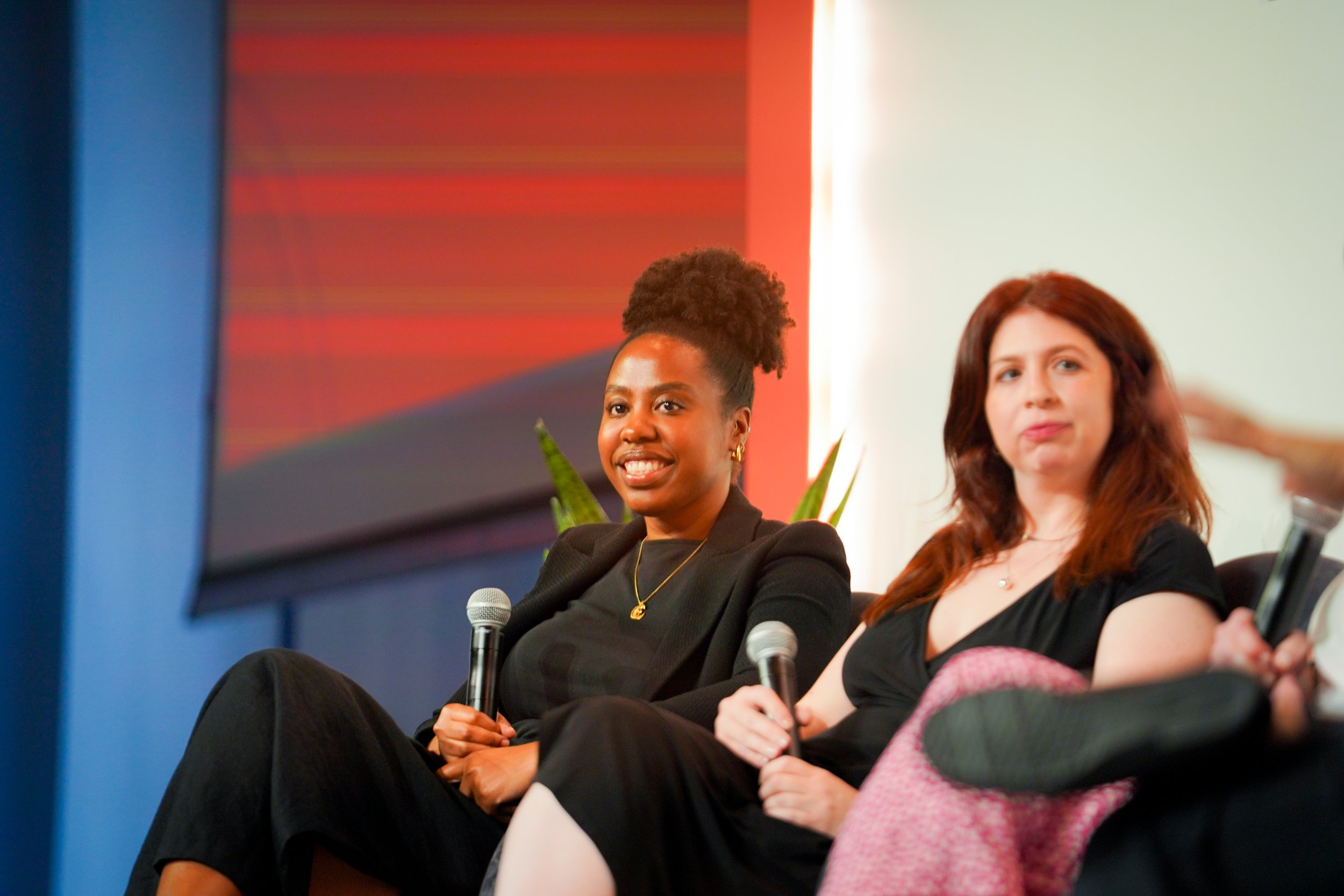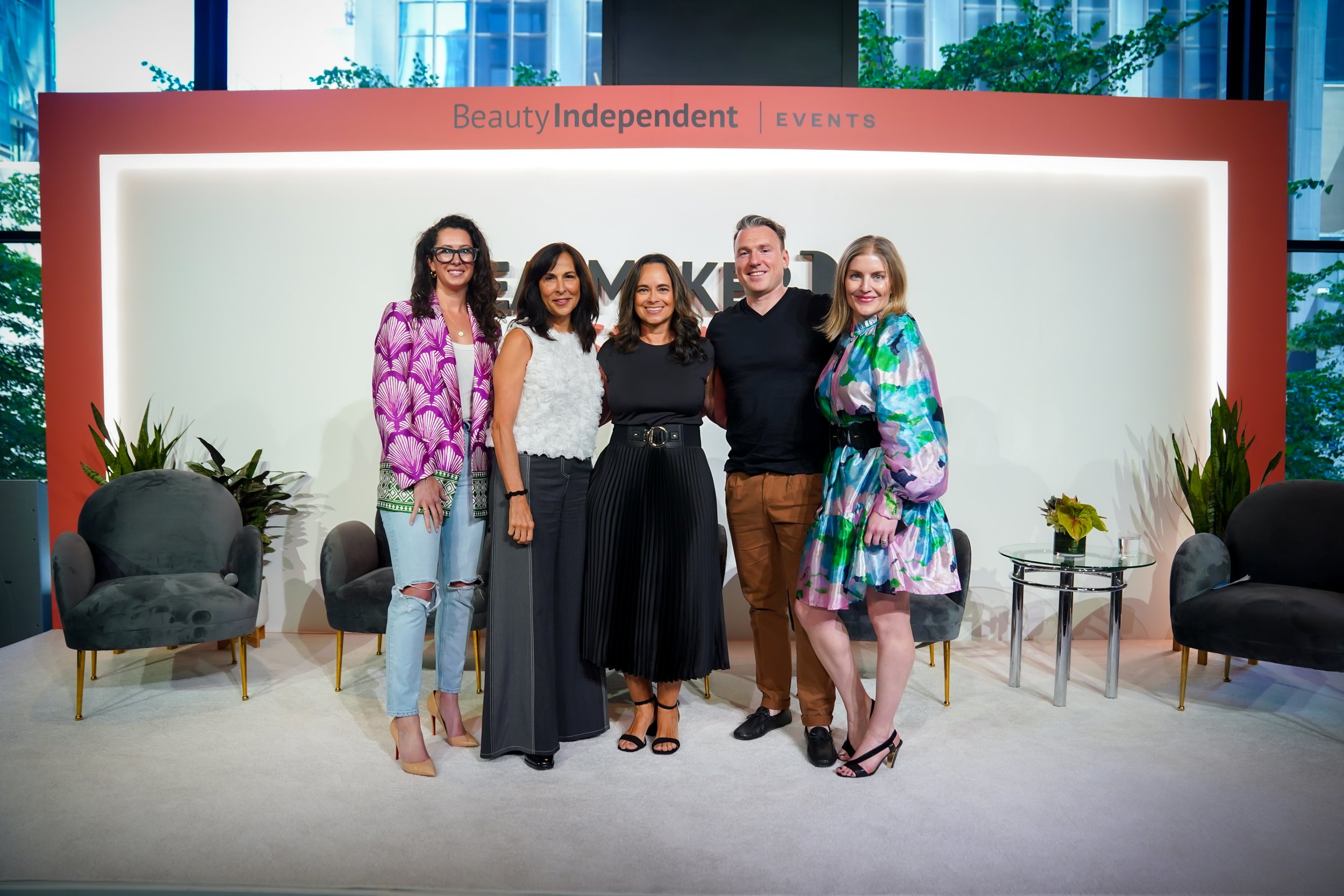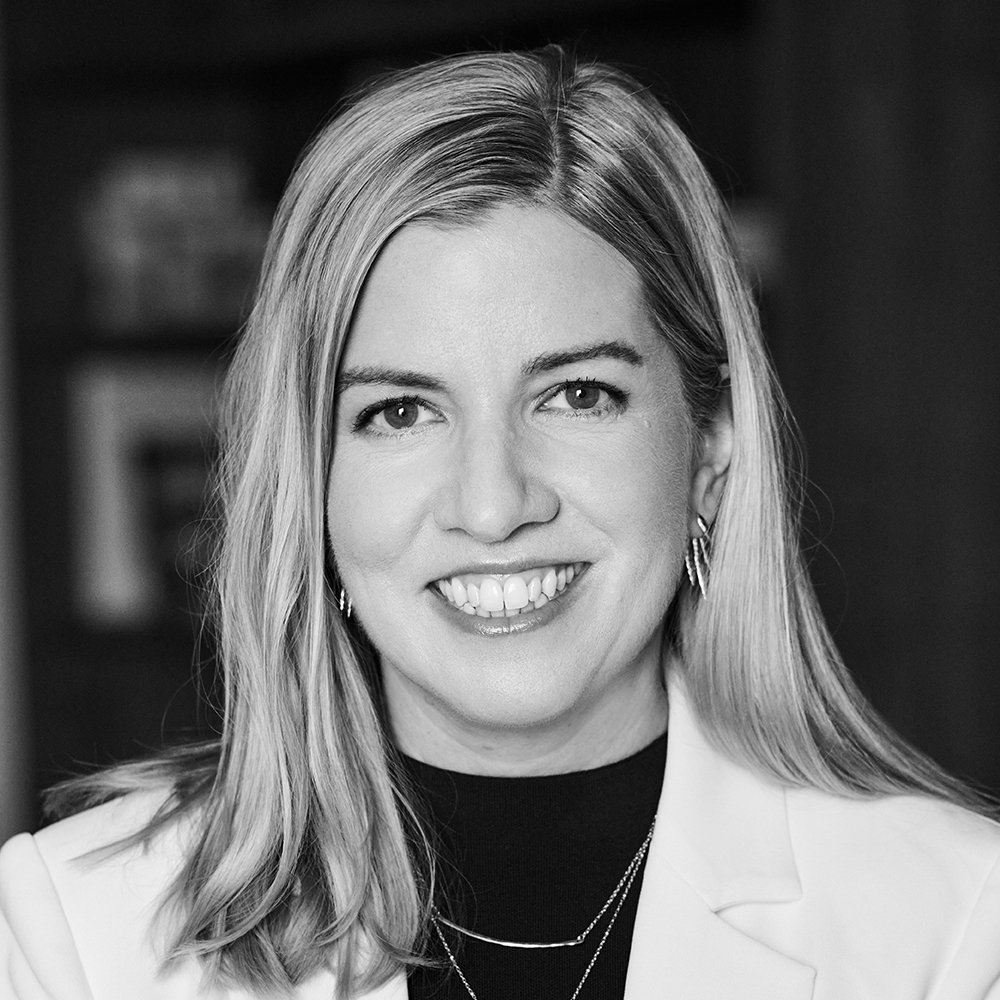Dealmaker Summit NYC
JUNE 17-18, 2024
SOLD OUT
|
SOLD OUT |
The First-Ever Summit Laser-Focused On Beauty Dealmaking
Beauty Independent’s Dealmaker Summit is widely recognized as the premier sector-specific professional event for leaders involved in fund raising, capital strategy and M&A in beauty and wellness.
Renowned for its best-in-class content, the Dealmaker Summit features an expertly crafted agenda focused on topics relevant to beauty and wellness dealmakers, carefully curated panels that provide relevant yet diverse perspectives, and original research and insights presented by Beauty Independent’s Editorial team.
Join a diverse group of the most influential dealmakers active in the space, including strategics, private equity, venture capital, family offices, angel investors, incubators, investment bankers, as well as founders and CEOs of high growth brands for two-days of peer-level thought leadership and networking.


















There’s nothing like this event in the industry today.
“”
— REUBEN CARRANZA
Executive Chairmain, Bansk Beauty
Schedule
DAY 1
-
Come early and enjoy our hot breakfast! This is a great opportunity to network with other attendees, schedule meetings and grab a cup of coffee before the first session starts.
-
-
A year ago things seemed bleak in the beauty M&A world, forcing many bankers to vacation in one of the lesser Hamptons. Then came news that inflation was cooling, the worst of interest rate hikes was likely behind us, consumer spending remained stable and the much dreamt-about ‘soft landing’ was a genuine possibility in the US. By December, deal flow had come roaring back with a speed and intensity that rivaled the frothy days of early 2021. K18, Dr Dennis Gross, RoC, Barbara Sturm, The Honeypot Co., DS&Durga all traded in a 30 day period.
From hair to skin, body and fragrance, it looked as if beauty dealmaking was back in full force and once again making headlines. But look under the surface, and one begins to see a more nuanced picture. From the types of assets traded to the multiples and exit conditions, things may be better, but definitely more tempered. In this panel we examine the latest rounds of dealmaking and what they portend for the future.
Moderator:
Nader Naeymi-Rad, Founder & Publisher, Beauty IndependentPanelists:
• Nicole Fourgoux, Operating Partner, Stride Consumer Partners
• Rich Gersten, Co-Founder & Managing Partner, True Beauty Ventures
• Kevin Kim, Director, Investment Banking, Raymond James
• Colin Welch, Managing Director, Head of NY & London Offices, TSG Consumer Partners -
Following an uncertain 2023 in which venture capital investment fell to a 6-year low, beauty M&A activity is set to accelerate as investors and strategics work through their deal pipelines from the past 12 months. While strategic buyers will continue to prioritize profitable, growing companies with differentiation in terms of efficacy and positioning, how will they be shaking up their investment strategy? Are they looking to stick to the core four categories or hoping to step out into the riskier, but perhaps greener pastures of wellness, sex, biotech, and bodycare? Where do the key players see the value whitespace throughout the investment value chain and how has this changed post-pandemic?
Moderator:
Nader Naeymi-Rad, Founder & Publisher, Beauty IndependentPanelists:
• Michel Brousset, Founder & CEO, Waldencast
• Carol Hamilton, Group President, Acquisitions & West Coast Headquarters, L'Oréal -
Gen Alpha may be the buzziest cohort of consumers, but in reality, each generation drives the industry forward in varying ways. We take a holistic look at what the opportunities are in each generation and the value each of these groups specifically brings to beauty and value creation. We also examine brands that have successfully tapped into these markets and how they did it.
Moderator:
Claire McCormack, Senior Editor, Beauty IndependentPanelists:
• Mark Curry, Co-Founder, The Inkey List
• Larissa Jensen, SVP Global Beauty, Industry Advisor, Circana
• Jill Scalamandre, CEO, Beekman 1802
• Tara Tersigni, Founder, YAWN -
-
Promising a sip from the fountain of youth is hardly a new premise in the beauty industry. But consumer interest and investment activity in wellness– and a focus on less superficial benefits– has been growing steadily for years. As science-backed brands across the industry are on the rise, a generation of souped-up wellness offshoots promising biohacks for improved health, better cognitive function and longer lifespans are gaining traction. First, we define what a longevity brand is and determine whether the science actually backs up the claims these brands are making. Next, we determine how investment professionals are sizing up the potential of the category. Is it a gold mine of financial opportunity that will create a real impact in dealmaking or just another buzzword? Finally, we identify the challenges of operating in the space.
Moderator:
Jane Carlson, Managing Editor, Beauty IndependentPanelists:
• Zainab Abdullah, Partner, BraunHagey & Borden
• Madeline Kaplan, Principal, Selva Ventures
• Sarah Kugelman, Founder, Gloss.com & skyn ICELAND
• Janica Lane, Managing Director & Co-Head Consumer Group, Piper Sandler -
Some categories are perpetually on the verge of popping but never seem to make it onto dealmakers’ dance cards. Bodycare and men’s grooming, in particular, hold much promise, have shown steady growth and are full of innovative entrants that could be poised for the next round of big deals and eventual exits. What’s kept categories like these from being pushed over the line in the past? Do dealmakers feel the tide changing for these groups? Can they produce as much value for stakeholders as the core four–skin, hair, color, and fragrance– categories?
Moderator:
Taylor Bryant, Editor, Beauty IndependentPanelists:
• Ashleigh Barker, Head of Beauty &
Personal Care, Lincoln International
• Katy Cottam, Founder & CEO, Luna Daily
• Rom Ginzburg, CEO, MAËLYS
• Rebecca Zhou, Co-Founder, Soft Services -
In 2022, Yellow Wood Partners acquired plusOne and Dame and Cake announced multimillion dollar raises within days of each other. Since then, the pleasure space has been quiet—save for Dame scooping up competitor Emojibator—while health-focused startups and the period care category have driven deal flow. As we wait with bated breath to see which of the holy trinity—Maude, Dame & Cake—close a juicy series B or gets acquired, what are the larger deal flow implications of the smaller scale brand-to-brand acquisitions going on in the space? Will the heavy deal flow in period care continue? And, how does the tumultuous retail landscape for the category impact the long-term prospects of the category’s most promising brands?
Moderator:
Claire McCormack, Senior Editor, Beauty IndependentPanelists:
• David Gaylord, Co-Founder & CEO, Bushbalm
• Catherine Magee, Co-Founder & CEO, Playground
• Jennifer Roach, Principal, Yellow Wood Partners -
Bioengineering methodologies have transcended their conventional healthcare applications in prescription drugs and professionally administered therapies to revolutionize the production of active molecules and complex biologics now being used in aesthetic treatments and beauty formulation. As the boundaries between healthcare and beauty blur, beauty is primed for a makeover. Will consumers seamlessly transition from understanding natural-leaning products and tried and true staples like vitamin C and retinol to embracing lab-manufactured alternatives? While biotech-driven innovations hold immense promise, concerns regarding safety, sustainability, and accessibility abound. As the realms of healthcare and beauty converge, we assess the evolving terrain and weigh the pros and cons of operating in the space.
Moderator:
Nader Naeymi-Rad, Founder & Publisher, Beauty IndependentPanelists:
• Joshua Britton, Founder & CEO, Debut
• Elana Drell-Syzfer, CEO, RéVive
• Mary Fisher, CEO, Colorescience
• Nini Zhang, Managing Director, Beauty & Wellness, Bank Of America -
-
Sponsored by Sayn Marketplace Solutions and Voyant Beauty
DAY 2
-
Come early and enjoy complimentary breakfast! This is a great opportunity to network with other attendees, schedule meetings and grab a cup of coffee before the first session starts.
-
-
A decade ago, professional investment firms focused on early-stage beauty dealmaking were practically non-existent. Now, the space is ripe with firms who see the potential of getting in on the ground level of the next stratospheric success story—see K18. At the same time, rising costs and increased competition seem to have narrowed down strategic options for emerging brands—self-fund until seed, launch DTC, raise, enter Sephora/Ulta/Target, raise more, prove traction in maybe one foreign market, then call your favorite banker and hit “exit”. Is there now a proven playbook for early stage investing in beauty or is it still an art form? And if most VCs are essentially funding the same strategy, then how will they differentiate themselves and what does this mean for brands that don’t fit this playbook?
Moderator:
Nader Naeymi-Rad, Founder & Publisher, Beauty IndependentPanelists:
• Manica Blain, Advisor, Investor, Board Member to Early-Stage Consumer Brands, Top Knot Ventures
• Diana Melencio, General Partner & Board Member, XRC Ventures
• Cristina Nuñez, Co-Founder & General Partner, True Beauty Ventures
• Anna Whiteman, Partner, Coefficient Capital -
Rising DTC costs has made brands suddenly realize how much they need retailers. But the retail landscape has been transformed over the past three years. The rocky post-pandemic economic environment caused a large number of retailers to shutter, while others were bought by larger competitors. As a result, far fewer retailers remain who can take a brand from under the radar to reign supreme. In mass, Target and Walmart hold the crown, whereas in prestige Ulta and Sephora hand out the golden tickets. Does a brand need to be in one of these retailers to grow, scale and snag a favorable valuation? Are there other retailers—or retail strategies—that dealmakers can utilize as viable value drivers?
Moderator:
Nader Naeymi-Rad, Founder & Publisher, Beauty IndependentPanelists:
• Tara Hyland, Principal, Main Post Partners
• Henry Davis, CEO, Sakara Life
• Andrew Stanleick, Industry Expert
• Ilya Seglin, Managing Director, Investment Banking, Cascadia Capital -
For years Amazon was neglected by beauty companies—big and small—who did not view the store as a suitable channel for their products, especially in the prestige and luxury end of the market. Oh, how times have changed. Today there is no doubt that the e-commerce giant plays a significant role in the beauty space, across all categories and every price point. Brand leaders no longer ask “why” Amazon, but “when” and “how” to best Amazon. From a value creation standpoint, however, how should investors view and value a brand's Amazon business—is it the gravy on a DTC or omnichannel strategy, or a viable new meat and potatoes of distribution? How should they guide their portfolio companies as to when and how to best utilize and invest on the store?
Moderator:
Erica La Sala, Editor, Beauty IndependentPanelists:
• Ransley Carpio, VP of Business Development & Head of Venture Investments, Front Row
• Melis del Rey, GM, Beauty, Baby & Beauty Technology, Amazon U.S. Stores
• Luc-Henry Rouselle, Managing Director, Investment Banking, Consumer, Leisure & Retail, DC Advisory
• Kerry Sullivan, CEO, Versed -
-
Patience is key when it comes to reaching the summit of luxury brand building. From the outside, the product’s glossy branding, high price points and cult status with consumers drive investors wild. But do these brands really command enviable deals after what is the end of a usually a (very) long road? Plus, the commercial environment is changing and many of the ‘force multipliers’ for luxury brands that enabled them to grow and scale–such as traditional PR and department store partnerships–are falling out of favor or no longer able to deliver the same lift. And new “hot” channels, like TikTok and Amazon, are unproven for luxury. Has the long road in luxury just gotten longer and more uncertain? Why should inventors still invest in the luxury beauty space, where should they place their bets and how should they guide their investments?
Moderator:
Rachel Brown, Editor In Chief, Beauty IndependentPanelists:
• Daniel Patrick Giles, CEO & Founder, Perfumehead
• Richard Henry, Partner, Sandbridge Capital
• Sandra Nait-Amer, Managing Director, Luxury, Fashion & Beauty, Rothschild & Co
• Mark Rice, Co-Founder & CEO, Ogee -
Driven by trends like Mob Wife and the Clean Girl aesthetic, visual mediums like TikTok, as well as new product categories like lip oils, makeup is back in the driver's seat. In 2023, color was prestige’s strongest category performer with sales ticking up to $2.6 billion while mass makeup sales rose 6%. Who are the brands driving growth and investor interest now and what is their secret sauce? And how do you protect against the traditional risks in this sector–such as massive SKU counts and living at the mercy of trends? Founders and investors weigh in on the scalability of these brands, the long term value they do or don’t hold in portfolios and where they see untapped opportunities.
Moderator:
Jane Carlson, Managing Editor, Beauty IndependentPanelists:
• Sasha Radic, Managing Director Beauty & Wellness, Jefferies
• Jonathan Velazquez, Co-Founder & CBO, Pound Cake
• Kimberly Villatoro, CEO, Patrick Ta
• Sarah Woelfel, Co-Founder & Partner, CULT Capital -
With so many celebrity-backed or -aligned brands on the market, the effectiveness of star power in the beauty industry is more topical than ever. When strategically utilized, it can lead to sunny outcomes – whether through traditional ambassadorships or more proactive executive roles. As investors now face the challenge of identifying the key ingredients for successful modern collaborations, we delve into the evolving intersection of celebrity and beauty, and where individuals like estheticians, makeup artists, and content creators fit with their burgeoning brands. Through examination of past wins and failures, we offer insights into the foundational elements that are more likely to lead to success and look at disparities and the suitability of celebrity endorsements across product sectors, from fragrance to sexual wellness.
Moderator:
Taylor Bryant, Editor, Beauty IndependentPanelist:
• Amanda Schutzbank, Co-Founder & General Partner, Willow Growth
• Maria Steingoltz, Managing Director and Chicago Office Head, L.E.K. Consulting
• Paula Sutter, Partner, Provenance
• Emily Zipperstein, Partner, Sidley Austin LLP -
File under, if you know you know (IYKYK, as the kids say). There is always something bubbling up in beauty that has yet to hit the mainstream. For example, Exosomes, nanoparticles that carry messages from one cell to another, have entered aesthetics promising similar or even superior results to PRP with far less headache. Following the sober curious movement, “wellness” for quitters, or antidotes to or replacements for “vice” products are gaining steam. We identify nascent trends that are deemed to dominate in the coming years, carve out their unique challenges and weigh in on where investors should place their bets.
Moderator:
Rachel Brown, Editor In Chief, Beauty IndependentPanelists:
• Taylor Bryant, Editor, Beauty Independent
• Erica La Sala, Editor, Beauty Independent
• Claire McCormack, Editor In Chief, Beauty Independent -
The top minds of our generation
-

Zainab Abdullah
PARTNER, BRAUNHAGEY & BORDEN
-

Ashleigh Barker
HEAD OF BEAUTY & PERSONAL CARE, LINCOLN INTERNATIONAL
-

Manica Blain
ADVISOR, INVESTOR, BOARD MEMBER, TOP KNOT VENTURES
-

Joshua Britton
FOUNDER & CEO, DEBUT
-

Michel Brousset
FOUNDER & CEO, WALDENCAST
-

Rachel Brown
EDITOR IN CHIEF, BEAUTY INDEPENDENT
-

TAYLOR Bryant
EDITOR, BEAUTY INDEPENDENT
-

JANE CARLSON
MANAGING EDITOR, BEAUTY INDEPENDENT
-

Ransley Carpio
VP OF BUSINESS DEVELOPMENT & HEAD OF VENTURE INVESTMENTS, FRONT ROW
-

Katy Cottam
FOUNDER & CEO, LUNA DAILY
-

Mark Curry
CO-FOUNDER, THE INKEY LIST
-

Henry Davis
CEO, SAKARA LIFE
-

Melis del Rey
GM, BEAUTY, BABY & BEAUTY TECHNOLOGY, AMAZON US STORES
-

Elana Drell-Syzfer
CEO, RÉVIVE
-

Mary Fisher
CEO, COLORESCIENCE
-

Sarah Foley
PARTNER, SWAT EQUITY
-

Nicole Fourgoux
OPERATING PARTNER, STRIDE CONSUMER PARTNERS
-

David Gaylord
CO-FOUNDER & CEO, BUSHBALM
-

RICH GERSTEN
CO-FOUNDER,
TRUE BEAUTY VENTURES -

Daniel Patrick Giles
FOUNDER & CEO, PERFUMEHEAD
-

Rom Ginzburg
CEO, MAËLYS
-

Carol Hamilton
GROUP PRESIDENT, ACQUISITIONS, L’OREAL
-

Richard Henry
PARTNER, SANDBRIDGE CAPITAL
-

Tara Hyland
PRINCIPAL, MAIN POST PARTNERS
-

Larissa Jensen
SVP GLOBAL BEAUTY, INDUSTRY ADVISOR, CIRCANA
-

Madeline Kaplan
PRINCIPAL, SELVA VENTURES
-

KEVIN KIM
DIRECTOR,
INVESTMENT BANKING,
RAYMOND JAMES -

Sarah Kugelman
FOUNDER, GLOSS.COM & SKYN ICELAND
-

ERICA LA SALA
EDITOR, BEAUTY INDEPENDENT
-

Janica Lane
MANAGING DIRECTOR & CO-HEAD CONSUMER GROUP, PIPER SANDLER
-

Susan Lin
PARTNER, FELIX CAPITAL
-

Catherine Magee
CO-FOUNDER & CEO, PLAYGROUND
-

CLAIRE MCCORMACK
SENIOR EDITOR, BEAUTY INDEPENDENT
-

Diana Melencio
GENERAL PARTNER & BOARD MEMBER, XRC VENTURES
-

NADER NAEYMI-RAD
FOUNDER & PUBLISHER, BEAUTY INDEPENDENT
-

Sandra Nait-Amer
MANAGING DIRECTOR, LUXURY, FASHION & BEAUTY, ROTHSCHILD & CO
-

Cristina Nuñez
CO-FOUNDER & GENERAL PARTNER, TRUE BEAUTY VENTURES
-

Sasha Radic
MANAGING DIRECTOR BEAUTY & WELLNESS, JEFFERIES
-

Mark Rice
CO-FOUNDER & CEO, OGEE
-

Jennifer Roach
PRINCIPAL, YELLOW WOOD PARTNERS
-

Luc-Henry Rouselle
MANAGING DIRECTOR, INVESTMENT BANKING, DC ADVISORY
-

Jill Scalamandre
CEO, BEEKMAN 1802
-

Amanda Schutzbank
CO-FOUNDER & GENERAL PARTNER, WILLOW GROWTH
-

Ilya Seglin
MANAGING DIRECTOR, INVESTMENT BANKING, CASCADIA CAPITAL
-

Andrew Stanleick
INDUSTRY EXPERT
-

Maria Steingoltz
MANAGING DIRECTOR, L.E.K. CONSULTING
-

Kerry Sullivan
CEO, VERSED
-

Paula Sutter
PARTNER, PROVENANCE
-

Tara Tersigni
FOUNDER, YAWN
-

Jonathan Velazquez
CO-FOUNDER & CBO, POUND CAKE
-

Kimberly Villatoro
CEO, PATRICK TA
-

Colin Welch
MANAGING DIRECTOR, TSG PARTNERS
-

Anna Whiteman
PARTNER, COEFFICIENT CAPITAL
-

Sarah Woelfel
CO-FOUNDER & PARTNER, CULT CAPITAL
-

Rebecca Zhou
CO-FOUNDER, SOFT SERVICES
-

Nini Zhang
MANAGING DIRECTOR, BEAUTY & WELLNESS, BANK OF AMERICA
-

Emily Zipperstein
PARTNER, SIDLEY AUSTIN LLP
Thank You To Our SPONSORS
Official Data Sponsor

By The Numbers
On a recent survey to Dealmaker Summit NYC 2024 attendees respondents:
100%
strongly agree or agree that the Dealmaker Summit sets the standard for a sector-specific conference in Beauty and Wellness
93%
are very likely or likely to attend another Dealmaker Summit
93%
are very likely or likely to recommend Dealmaker Summit to a friend or colleague
NOVEMBER 10-11, 2025
CONVENE LONDON
22 Bishopsgate, City of London, London
Focusing on the European market? Join us in London, November 10-11 for two days of real-world actionable insights through the lens of the unique characteristics of the European market combined with impactful networking.
Dealmaker SUMMIT EU/UK
2026
CONVENE
One Liberty Plaza, New York, NY
Looking for Dealmaker States-side? Join us in New York City for two days of real-world actionable insights combined with impactful networking.
Dealmaker SUMMIT NYC
Related
From Fragrance Category Bullishness To An Emphasis On Omnichannel, 10 Top Takeaways From Dealmaker Summit EU/UK
The Big Difference Between European And American Beauty Deals
What Beauty M&A Looks Like Now That The Era Of Rapidly Growing DTC Brands Is Largely Over Read More >
Experts Believe AI Will Fundamentally Change The Beauty Industry In A Few Years
What Chinese Beauty Consumers Are Looking For Today—And How Much It Costs To Reach Them
Sephora UK’s VP Of Global Merchandising On How Brands Fail And Flourish At The Retailer
CONVENE
One Liberty Plaza, 2nd Floor,
New York, NY 10006











